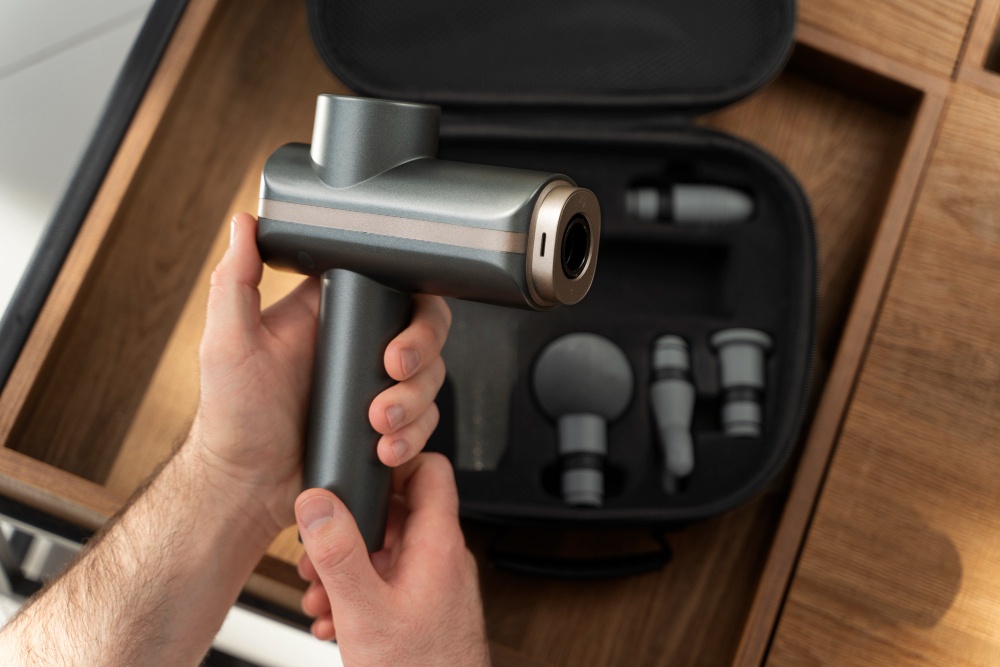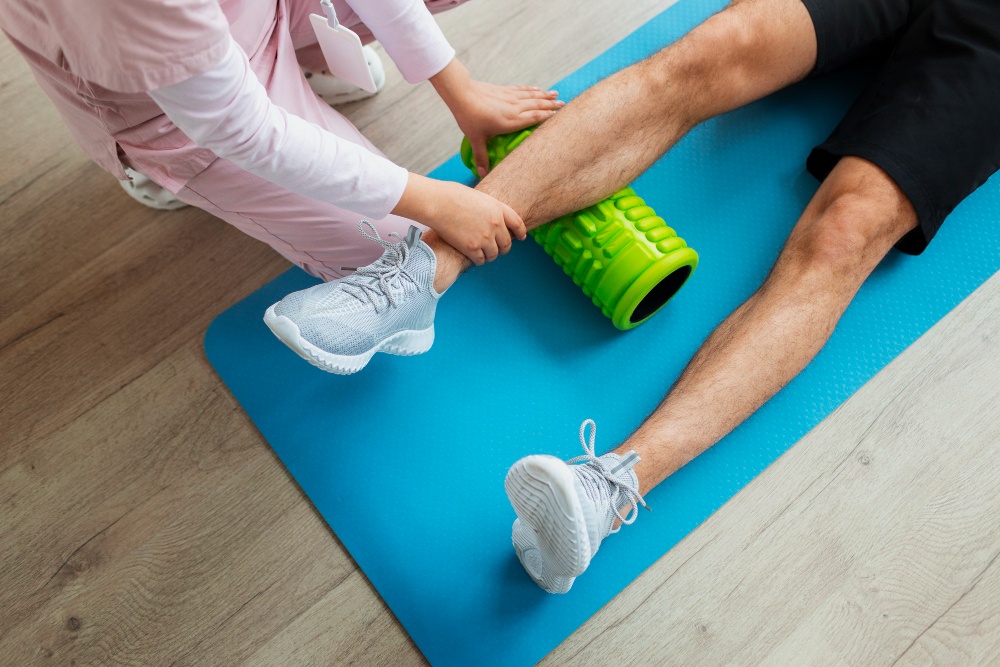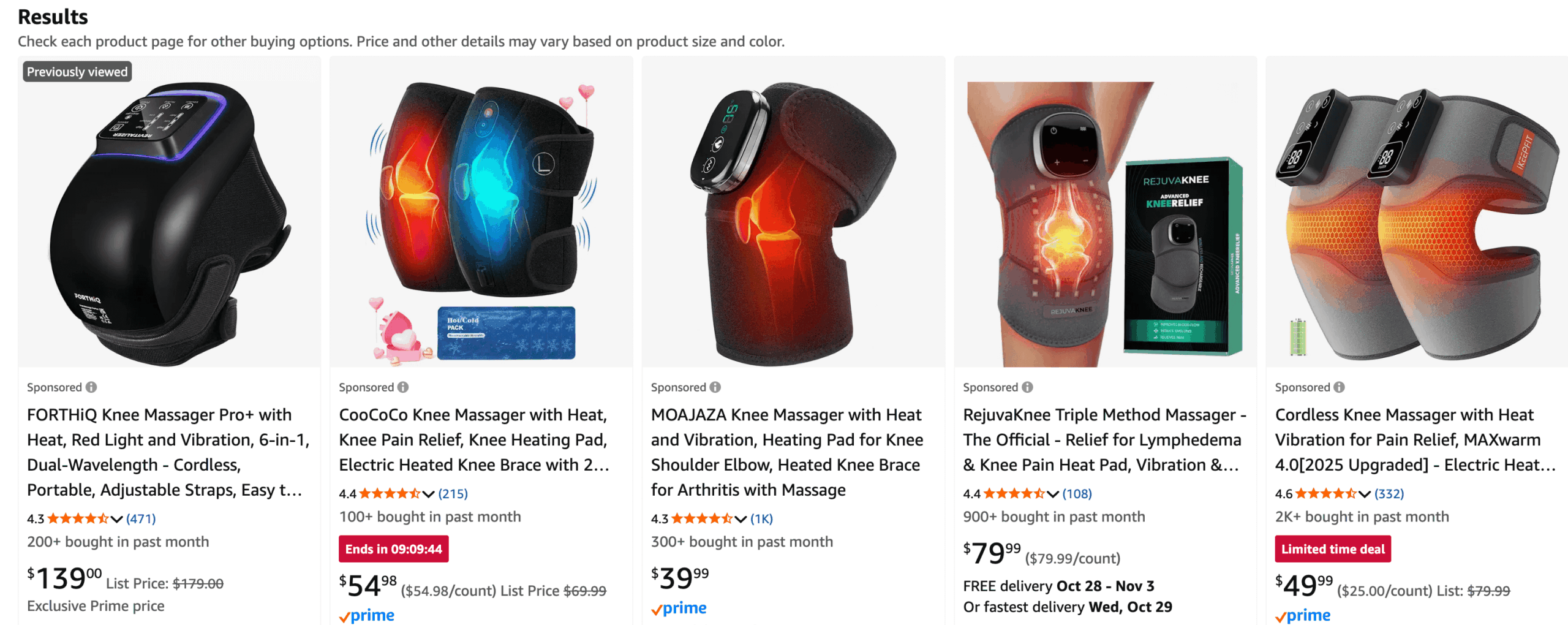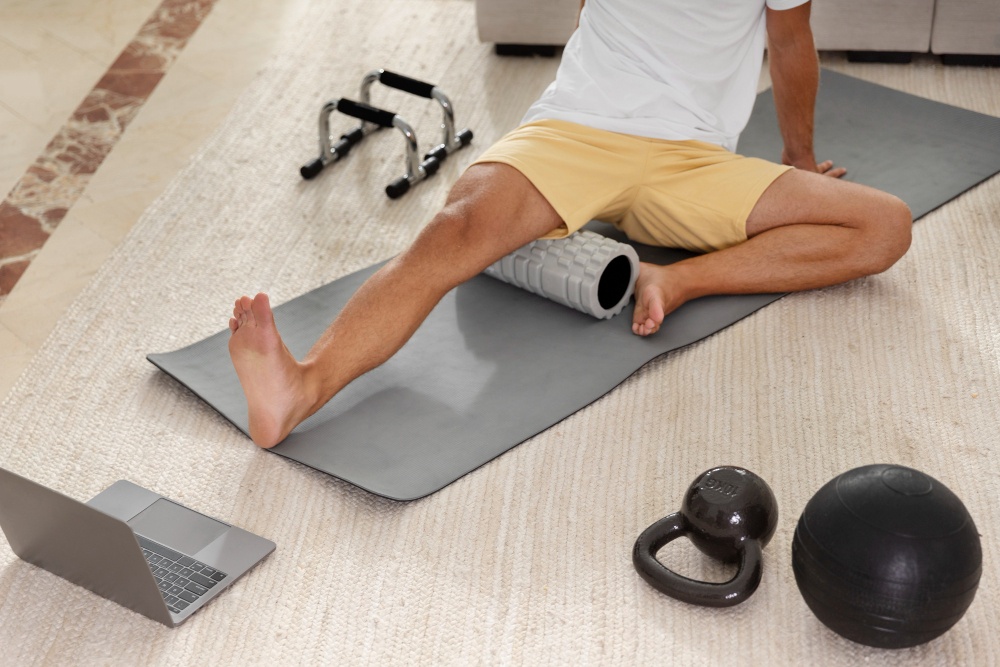Best Knee Massager for Arthritis: Features and Safety Tips

Living with knee arthritis can make everyday tasks challenging. Heat, vibration, and gentle compression applied through a knee massager may provide temporary relief by improving circulation, reducing stiffness, and soothing sore tissues.
Choosing a massager that matches your needs and using it properly can make a noticeable difference in comfort. Below, we explain how knee massagers work, what features to look for, and some of the top devices available.
Top Knee Massagers for Arthritis Relief on Amazon
When browsing Amazon, look for devices with high ratings, good return policies, and clear safety instructions. Here are a few top picks:
- 360 Degree Knee Massager: It’s the world’s first 360° kneading knee massager. It also combines heat and red light therapy and boasts a cordless design for complete ease.
- Renpho Heated Knee Massager: Offers heat therapy, vibration, and air compression. The ergonomic design covers the knee and secures with velcro straps. There are multiple intensity settings and an automatic shut-off feature after 15 minutes for safety. This massager is well-rated for arthritis relief and easy to put on.
- PhysioFlex Comforting Knee Massager: Provides air compression and heat, making it ideal for reducing post-surgical swelling. It covers the entire knee joint and has adjustable pressure levels. Some versions include vibration as well.
- Vive Knee Ice and Heat Wrap with Compression: This versatile wrap includes gel packs that can be heated or chilled and an inflation bulb to apply compression. Users can switch between cold and heat therapy to manage pain and inflammation.
- Massager and Red Light Combined: A high-end device that combines red light therapy, heat, and massage for deep penetration. It’s designed for chronic arthritis and tendonitis sufferers, offering multiple settings for comfort.
Always check the latest customer reviews on Amazon to ensure the product fits your needs and has reliable support.
How Knee Massagers Work

A knee massager is a device designed to deliver therapeutic modalities—such as heat, vibration, air compression, or red light therapy to the knee joint. Localized massage and heat therapy have been shown to improve pain and mobility in degenerative joint disease.
These devices can be used at home to extend the benefits of physical therapy between sessions. They are particularly helpful for people managing arthritis or recovering from surgery.
Modalities and Benefits
- Heat: Warmth penetrates tissues, relaxes stiff muscles, and increases blood flow, which may ease stiffness and prepare the joint for movement.
- Vibration: Gentle vibration stimulates circulation and provides a soothing massage, reducing muscle tension around the knee.
- Air compression: Rhythmic squeezing helps with lymphatic drainage and may reduce swelling, especially after surgery or injury.
- Red light therapy: Red and near‑infrared light penetrate tissues to promote cellular repair and reduce chronic inflammation.
Many knee massagers combine two or more of these modalities to maximize relief.
Key Features to Consider

When selecting a knee massager, keep these factors in mind:
- Therapy modalities: Choose devices offering the modalities best suited for arthritis. Heat and vibration are often preferred for joint pain, while compression helps with swelling. Some devices include red light therapy for chronic inflammation.
- Wearability and fit: A wraparound design with adjustable straps keeps the massager in place and allows hands‑free use. People with limited dexterity benefit from easy closure systems.
- Power source: Cordless models offer freedom to move but may have shorter sessions. Plug‑in models deliver consistent power but restrict mobility. Some devices include both battery and AC options.
- Intensity and settings: Adjustable temperature, vibration speed and compression level let you personalize treatment. Auto shut‑off features enhance safety.
- Post‑surgical compatibility: If you’re recovering from surgery, choose a massager with gentle compression and controlled heat. Avoid high‑intensity vibration.
Types of Knee Massagers
Percussion Massagers
These handheld devices deliver rapid percussion strokes. They’re versatile and can relieve tension in the thighs, hamstrings, and calves, which indirectly helps the knee. Percussion massagers are best for athletes or individuals with tight muscles surrounding the knee, however, they require hand strength and coordination.
Heated Wraparound Massagers
These devices wrap around the knee and apply heat and vibration directly to the joint. They are ideal for arthritis sufferers because they combine warmth and massage in a hands‑free design. An example is the Chirp X Knee massager, which offers adjustable heat and vibration in a comfortable neoprene wrap.
Compression and Heat Devices
Some massagers use air bladders to gently compress and release pressure around the knee while applying heat. The PhysioFlex Comforting Knee Massager uses air compression and heat to reduce swelling and promote healing, making it suitable for post‑surgery recovery.
Red Light Therapy Massagers
These devices utilize light‑emitting diodes to deliver red and near‑infrared wavelengths, which may reduce inflammation and promote cellular repair. The Hooga Red Light Therapy Knee Massager is an example designed for chronic conditions like tendonitis or long‑standing arthritis.
Safety Considerations
- Consult your doctor: If you have neuropathy, vascular disease, a pacemaker or other implants, seek medical advice before using a knee massager.
- Follow instructions: Limit sessions to about 15–30 minutes, one or two times per day, unless your provider recommends otherwise. Many devices have built‑in timers for safety.
- Watch for side effects: Mild redness or warmth is normal, but stop using the device if you experience increased pain, numbness, or irritation. Do not use over open wounds or areas of infection.
- Start low: Begin with the lowest heat and vibration settings and gradually increase as tolerated.
Integrating a Knee Massager into Arthritis Care
A knee massager is a supportive tool, not a cure. Use it alongside other strategies to manage arthritis:
- Exercise and stretching: Strengthening the quadriceps and hamstrings helps stabilize the knee and reduces pain. Incorporate gentle stretching and low‑impact activities.
- Weight management: Maintaining a healthy body weight reduces joint stress and pain.
- Professional therapy: Physical therapy, viscosupplementation and platelet‑rich plasma therapy can reduce pain and improve function. Learn more about our viscosupplementation and genicular artery embolization options.
- Knee braces: For added stability, consider an arthritis‑specific brace.
Frequently Asked Questions
Do knee massagers really work? When used properly, knee massagers that provide heat, compression or vibration can reduce pain and stiffness. They work best as part of a broader treatment plan rather than as a standalone cure.
Are knee massagers safe after surgery? Yes, but only with approval from your surgeon or physical therapist. Devices with gentle compression and controlled heat—such as the PhysioFlex—are suitable for early post‑operative use. Always avoid intense vibration near surgical incisions.
Can a knee massager help with swelling? Compression‑based devices aid lymphatic drainage, which can reduce swelling after injury or surgery. Pair compression with cold therapy if swelling is acute.
How often should I use a knee massager? Most people find relief with 15–30‑minute sessions one or two times per day. Always follow the manufacturer’s instructions.
Are there side effects? Mild redness or warmth may occur. People with reduced sensation or circulation problems should use extra caution. Stop use if you feel pain, numbness or irritation.
Alternatives and Complementary Options

If a knee massager is not available or appropriate, other home therapies include:
- Warm compresses: Apply a warm towel or heating pad to relax muscles and ease stiffness.
- Gentle self‑massage: Use your hands to rub the muscles around the knee. Focus on the quadriceps, hamstrings and calves.
- Foam rolling: Rolling the front and back of the thigh can release tight muscles and improve knee comfort.
Find Relief That Fits Your Lifestyle
Knee massagers can provide real comfort from arthritis-related pain and stiffness, especially when used alongside gentle exercise, a healthy weight, and the right treatment plan. Choosing a device with the right features for your needs is a great first step.
If knee pain is interfering with your daily life, let the team at Arthritis Knee Pain Centers help. Schedule a no-charge, no-obligation screening to explore safe, non-surgical options tailored to your symptoms and goals.
*If you purchase a product from one of the links in this article we may receive a small commission.
